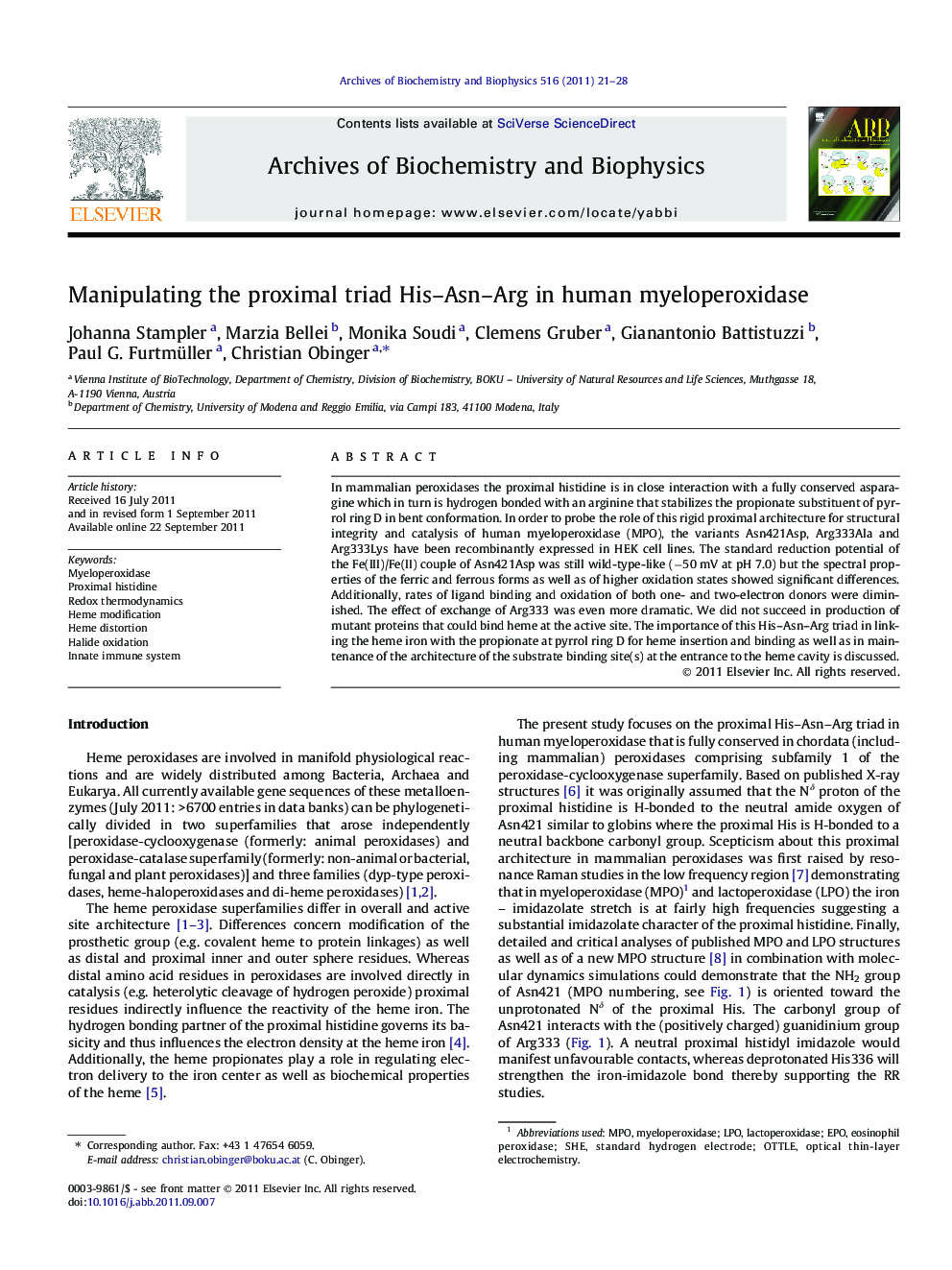| Article ID | Journal | Published Year | Pages | File Type |
|---|---|---|---|---|
| 1925641 | Archives of Biochemistry and Biophysics | 2011 | 8 Pages |
In mammalian peroxidases the proximal histidine is in close interaction with a fully conserved asparagine which in turn is hydrogen bonded with an arginine that stabilizes the propionate substituent of pyrrol ring D in bent conformation. In order to probe the role of this rigid proximal architecture for structural integrity and catalysis of human myeloperoxidase (MPO), the variants Asn421Asp, Arg333Ala and Arg333Lys have been recombinantly expressed in HEK cell lines. The standard reduction potential of the Fe(III)/Fe(II) couple of Asn421Asp was still wild-type-like (−50 mV at pH 7.0) but the spectral properties of the ferric and ferrous forms as well as of higher oxidation states showed significant differences. Additionally, rates of ligand binding and oxidation of both one- and two-electron donors were diminished. The effect of exchange of Arg333 was even more dramatic. We did not succeed in production of mutant proteins that could bind heme at the active site. The importance of this His–Asn–Arg triad in linking the heme iron with the propionate at pyrrol ring D for heme insertion and binding as well as in maintenance of the architecture of the substrate binding site(s) at the entrance to the heme cavity is discussed.
► Probing the fully conserved proximal His-Asn-Arg triad in human myeloperoxidase. ► Insights in proximalheme coordination and stabilization. ► Mutations have impact on spectral properties, ligand binding and substrate oxidation. ► Exchange of proximal asparagine affects ligand and substrate accessibility.
